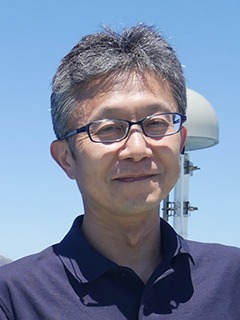-
-
Chief of co-chiefs
Shuichi Kodaira
Japan Agency for Marine Earth Science and Technology JPN
JTRACK is finally happening. Following the Tohoku-oki earthquake, many research projects have been working to understand what happened at the megathrust fault. Among them, JFAST directly accessed the source fault and provided conclusive results. Twelve years have passed, a remaining fundamental question is what preparation processes are currently underway on the source fault for the next earthquake? JTRACK will tackle this unique theme that can only be addressed by earth scientists who are witnessing a once-in-a-thousand-year geodynamic phenomenon. I am excited to share this theme with researchers worldwide and can't wait to work onboard of the Chikyu.

-
Marianne Conin
University of Lorraine FRA
I am really looking forward to working with all the colleagues and scientists who are and will be involved in the JTRACK adventure to better understand the key parameters responsible for the Mw9 Tohoku-oki earthquake.

-
Christine Regalla
Northern Arizona University USA
The JTRACK expedition will provide critical data to understand how variability in incoming plate structure and composition relate to the evolution of the plate boundary, and how the physical properties of the shallow decollement vary in space. These are critical data necessary to evaluate the geologic controls on the occurrence of shallow tsunamigenic slip.

-
Patrick Fulton
Cornell University USA
I am excited to return to the Japan Trench to further explore the physical processes controlling earthquakes and tsunami. It is a real privilege to be able to work on Chikyu and with such great collaborators. I am honored to be part of the leadership team and have high hopes for what we can achieve.

-
Kohtaro Ujiie
University of Tsukuba JPN
JTRACK plans to drill the shallow plate boundary fault ~13 years after the Tohoku-Oki earthquake and collect incoming sediment on the Pacific plate. I hope to elucidate whether the shallow plate boundary fault has already begun to lock and accumulate strain energy for the next megathrust earthquake, and what controlled the slip distribution during the earthquake.

-
Jamie Kirkpatrick
University of Nevada, Reno, USA
I' m excited for JTRACK Expedition 405 because the data and samples we collect by drilling into the fault will give us a unique chance to learn about how earthquakes work and what causes them to generate large tsunamis, which we need so that we can have a better understanding of what might happen in the future.

-
Science Party


















